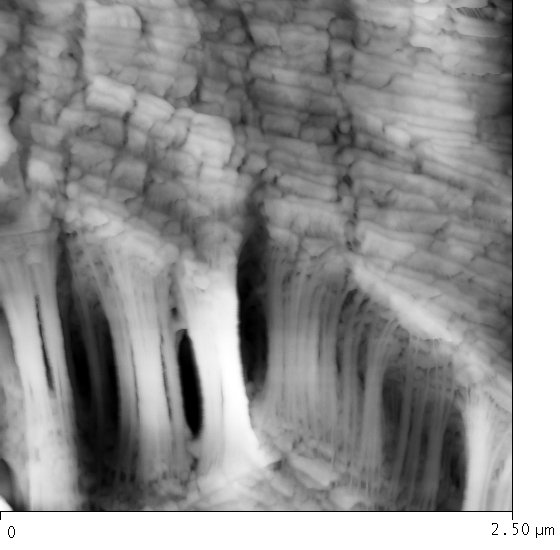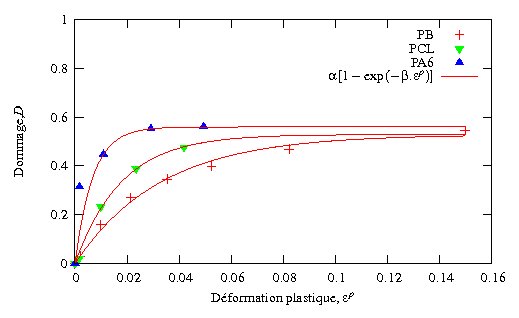Personal
Science topics
Semicrystallin polymers deformation
Prothesis
of anterior
cruciate ligament
Mantle rheology
Educational Resources
Deformation Mechanisms in
Semicrysalline Polymers
The aim of this work is to study the nano-scale deformation mechanisms within the spherulitic structure of semi-crystalline polymers. The deformation mechanisms are imaged by atomic force microscopy. The originality of this work is the use of a home-made tensile drawing stage under the AFM head in order to perform in situ tensile tests (Figure 1).

Figure 1 in situ tensile testing machine
The
observations performed on several semi-crystalline polymers such as
polyamide 6 (PA6), polybutene (PB) and polycaprolactone (PCL). Theses
observations revealed fragmentation of
crystalline lamellae (Figure 2) and micro-crazing (Figuree 3). These
mechanisms appear from
the end of elastic stage, and induce permanent deformation and
degradation of mechanical properties.
 Figure 2 AFM height image
of
fragmentation in PB
|
 Figure 3 AFM height image of micro-crazing in PB
|
These experimental observations
enable assuming that there is a
coupling between plasticity and damage. The viscous contribution is
first identified, then subtracted from the data of cyclic tensile tests
in order to assess the damage and the plastic deformation. The damage
evolution follows the same law for the various materials in spite of
their large structural differences (lamellar thickness, spherulite
diameter, glass transition temperature, ...) (Figure 5).
 Figure 4 Law coupling
damage and cumulated plastic strain
|
 Figure 5 Rheological model |
The mechanical behavior
modeling based on the concept that the
semi-crystalline polymers consist of a macromolecular network flanged
by the crystalline structure. The behavior law has been developed with
this concept including the damage law previously identified (Figure 5).
This law
has been implemented in a finite element program, ZéBuLon. Good fits of
the
experimental monotonic and cyclic tensile tests have been obtained
together with fairly good predictions of the relaxation behavior of
three studied materials (Figure 6).

Figure 6 Model versus
experiment (Polybutčne case)

